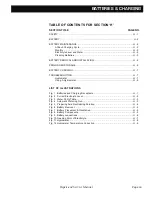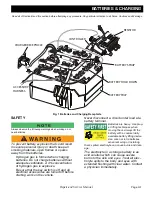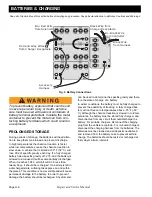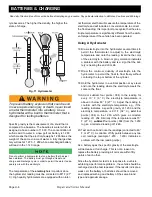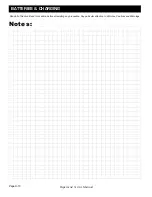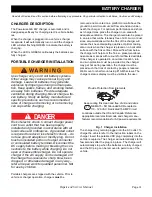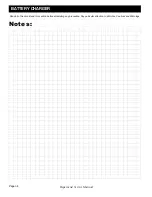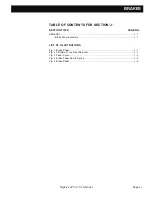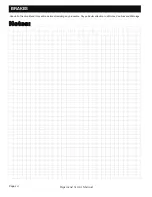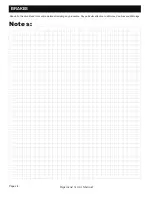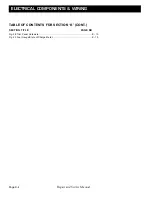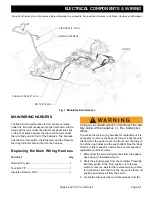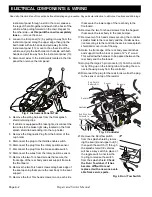
BATTERY CHARGER
Page I-1
Repair and Service Manual
Read all of Section B and this section before attempting any procedure. Pay particular attention to all Notes, Cautions and Warnings.
B
B
CHARGER DESCRIPTION
The Powerwise QE 48V charger is automatic and is
designed specifically for charging electric vehicle batter-
ies.
When the charger is plugged into a vehicle’s charger
receptacle it will automatically turn on and the charger’s
LED will start flashing GREEN to indicate the battery is
charging.
When the LED is GREEN continuously the batteries are
fully charged.
PORTABLE CHARGER INSTALLATION
Use charger only on 48 volt battery systems.
Other usage may cause personal injury and
damage. Lead acid batteries may generate
explosive hydrogen gas during normal opera-
tion. Keep sparks, flames, and smoking materi-
als away from batteries. Provide adequate
ventilation during charging. Never charge a fro-
zen battery. Study all battery manufacturers’
specific precautions such as recommended
rates of charge and removing or not removing
cell caps while charging.
Risk of electric shock. Connect charger power
cord to an outlet that has been properly
installed and grounded in accordance with all
local codes and ordinances. A grounded outlet
is required to reduce risk of electric shock – do
not use ground adapters or modify plug. Do not
touch uninsulated portion of output connector
or uninsulated battery terminal. Disconnect the
DC supply before making or breaking the con-
nections to the battery while charging. Do not
open or disassemble charger. Do not operate
charger if the AC supply cord is damaged or if
the charger has received a sharp blow, been
dropped, or otherwise damaged in any way –
refer all repair work to qualified personnel. Not
for use by children.
Portable chargers are shipped with the vehicle. Prior to
vehicle or charger operation, chargers
must
be
removed and mounted on a platform or wall above the
ground to permit maximum air flow around and under-
neath the charger. For optimum performance and short-
est charge times, place the charger in an area with
adequate ventilation. The charger should also be placed
in an area that will be relatively free of dirt, mud, or dust
since accumulations within the fins of the charger will
reduce their heat-dissipating qualities. Optimal cooling
also occurs when the charger is placed on a horizontal
surface with the fins vertical. More airflow from below
the charger will help cool the fins, so placement above
open areas or areas with cut-outs for airflow is desirable.
If the charger is operated in an outdoor location, rain
and sun protection must be provided. As the charger
may get hot during operation, the charger must be
placed such that risk of contact by people is reduced.
Wall mount or shelf mount using #10-M5 screws. The
charger’s status display must be visible to the user.
Fig. 1 Charger Installation
The charger may remain plugged into the AC outlet. To
charge the vehicle refer to the instruction labels on the
charger. Insert the polarized DC plug completely into the
vehicle receptacle. The charger will automatically start a
few seconds after the plug is in place. The charger will
automatically stop when the batteries are fully charged
and the DC plug can be removed to permit use of the
vehicle.
DANGER
Provide Protection From Elements
Keep cooling fins clean and free of dirt and debris
NEMA 15 - 5R Grounded AC Receptacle
110 - 120 VAC. Dedicated 15 AMP Circuit
Locations outside the US and Canada: Reference
appropriate local electrical code and charger manu-
facturer recommendations for AC power requirements

